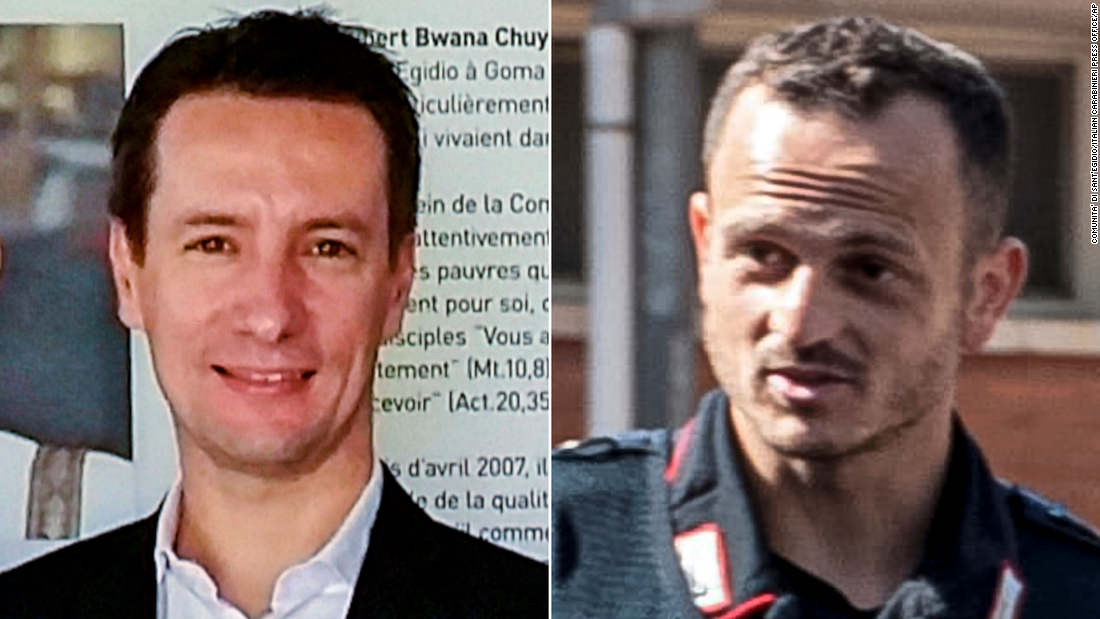The bodies of the two Italians arrived at Rome’s Ciampino airport overnight from Tuesday to Wednesday and were received by Italian Prime Minister Mario Draghi. Italian Foreign Minister Luigi Di Maio said Wednesday that the country had sent a team to the east of the DRC to investigate the incident.
“At the moment, all the facts are not clear,” said Pioletti. “We are still examining, we are dealing with an area where there are different armed groups, different ethnic groups, so we cannot attribute this attack to one of these groups, it is still too early.
“What we know for sure is that it was not an execution, it was a shootout, the ambassador and the carabiniere were hit by two bullets each,” added Pioletti after the two men ‘s autopsies completed on Wednesday.
An armed group stopped the convoy and forced passengers to disembark before an exchange of fire, the WFP said.
Iacovacci died after a bullet hit him close to the heart while Attanasio was shot twice in the abdomen, said Pioletti. Attanasio passed away on his way to the hospital, which was 50 minutes away.
It is not yet clear whether the bullets that killed the Italians were fired by the attackers or by the government military who defended them, added Pioletti.
The route was made on a road previously designated as safe for travel without security personnel, according to the WFP.
Rutshuru is just over two hours drive from Goma. The exit route from the regional capital has been unsafe for years, with several armed groups operating in the area.
There is a strong UN peacekeeping presence in the region, and UN convoys need security clearance to travel outside Goma.
With the identity of the attackers still unknown, the reason for the attack is uncertain. A political motive has not been completely ruled out, Pioletti said, but added that a kidnapping is more likely.
CNN’s David McKenzie, Nicola Ruotolo and Ingrid Formanek contributed to this report.
